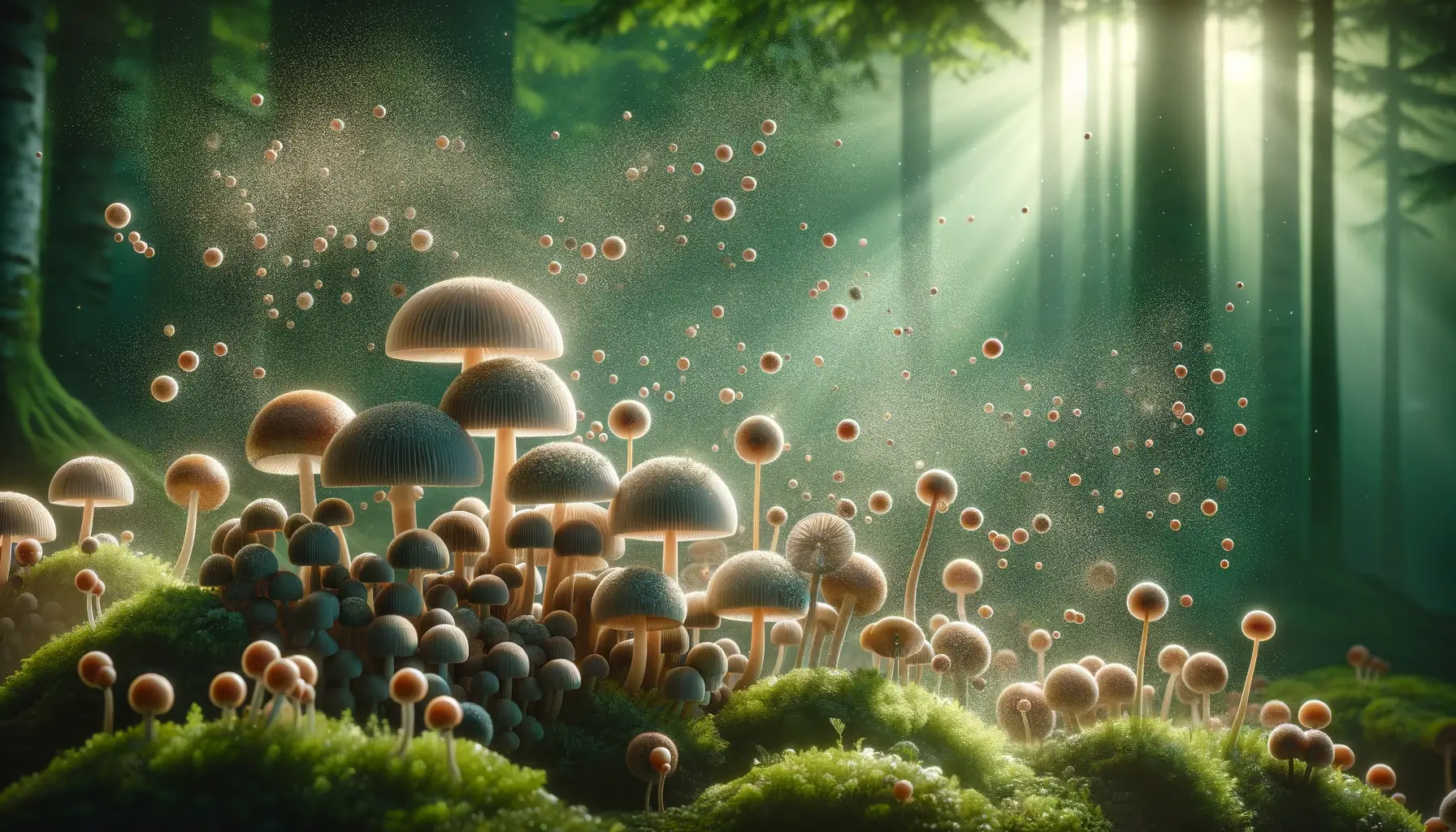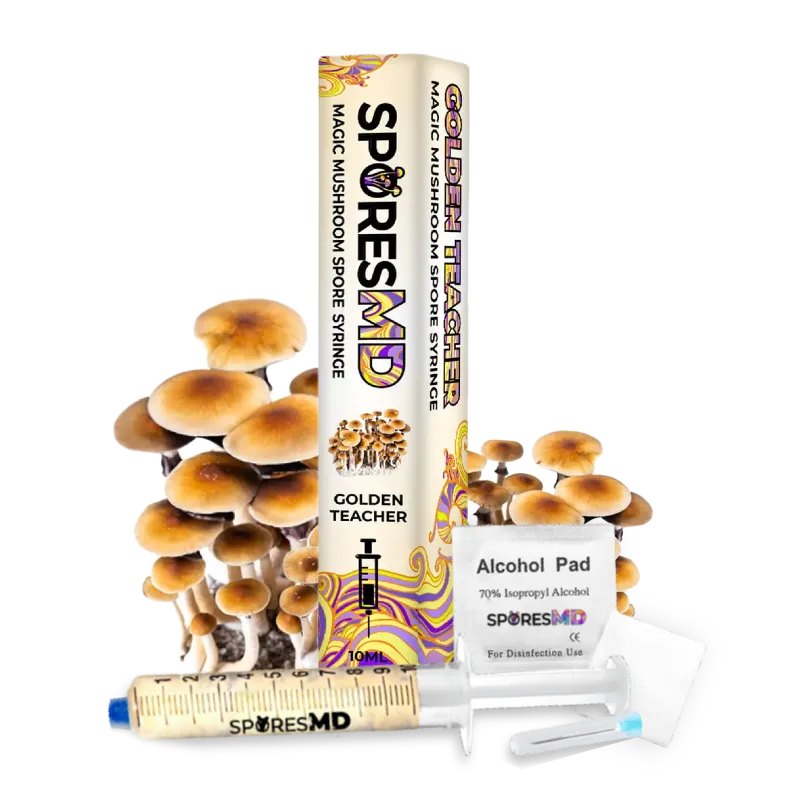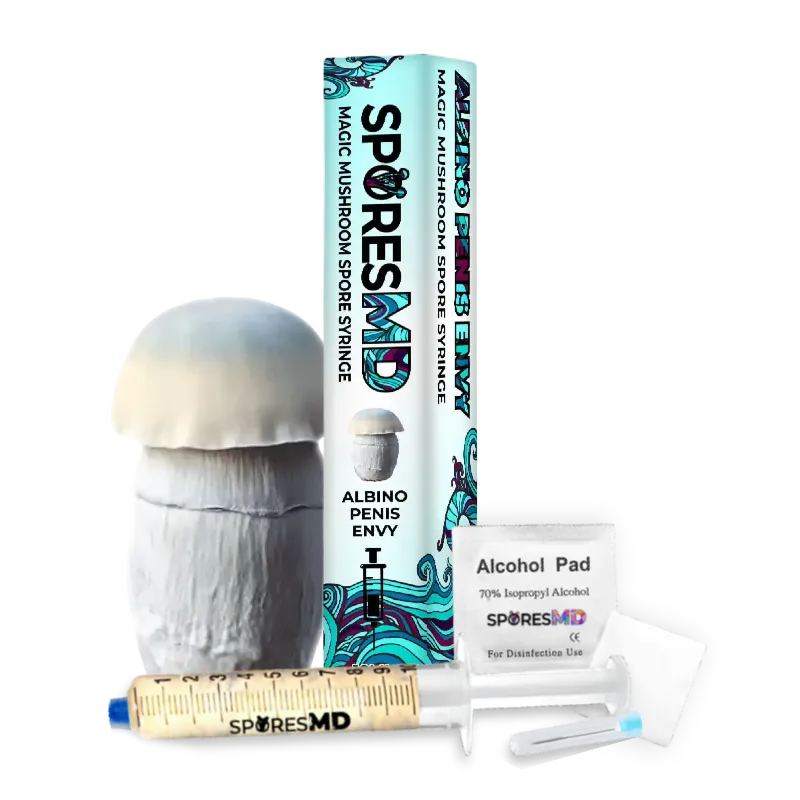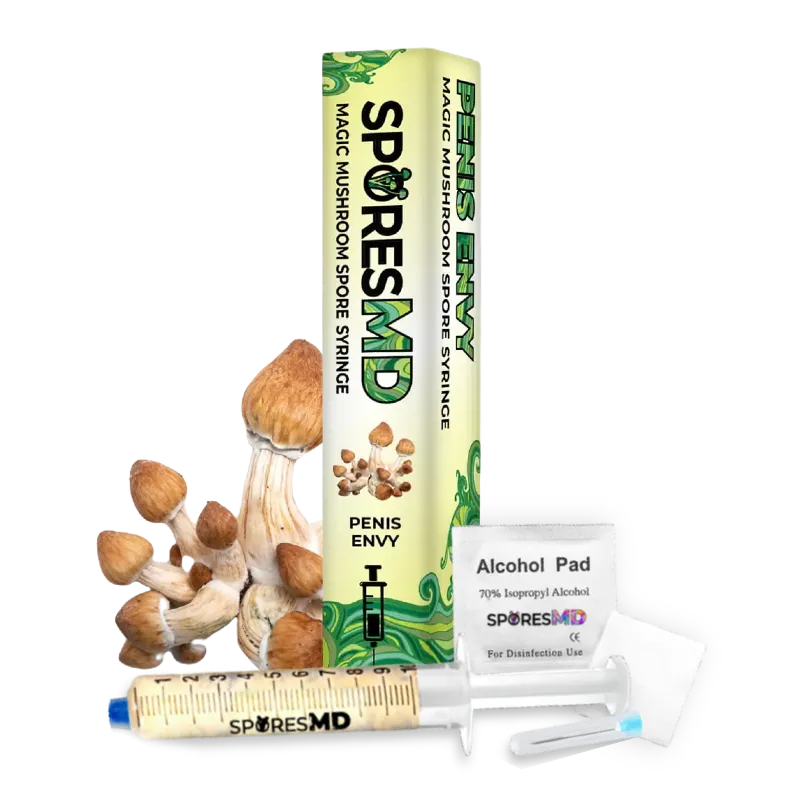Mushroom spores are fascinating. They’re the seeds of the mushroom world. Tiny and powerful, they hold the key to fungal reproduction. When you see a mushroom, you’re looking at just one part of a complex life cycle.
Spores come in various shapes and colors. They spread through the air, water, or even hitch a ride on animals. Once they land in a suitable environment, they can grow into new mushrooms. Understanding spores helps you grasp the incredible diversity and resilience of fungi.
Key Takeaways
- Mushroom Spores Are Critical for Fungal Reproduction: Acting like seeds in plants, mushroom spores contain the genetic material needed to produce new fungi.
- History: You can read about the history of mushrooms on the Natural Life Superstore website.
- Location and Distribution: Spores are found in the gills, pores, or teeth beneath the mushroom cap, and can spread through air, water, or via animals.
- Ecological Importance: Spores contribute to nutrient cycling and soil formation, playing a crucial role in sustaining ecosystems and biodiversity.
- Applications in Identification and Cultivation: Spores aid in distinguishing mushroom species and are used in both scientific research and practical cultivation methods.
- Health Risks: Certain spores can cause respiratory issues, such as lycoperdonosis, when inhaled. Proper precautions should be taken to minimize exposure.
- Creative Uses: Spore prints can also serve artistic and educational purposes, offering a natural and sustainable medium for creativity.
What Are Mushroom Spores?
Mushroom spores are the reproductive units of fungi, acting like plant seeds. They contain the genetic material needed to grow a new mushroom.
Composition of Mushroom Spores
- Cell Wall: Provides structural support and protection
- Cytoplasm: Contains genetic material (DNA or RNA) and organelles
- Nucleus: Stores the genetic material
- Mitochondria: Produces energy for the spore
- Endoplasmic Reticulum: Involved in protein synthesis and transport
Location of Mushroom Spores
Mushroom spores are primarily located in the gills, pores, or teeth under the mushroom cap. In puffball mushrooms, spores are contained inside the fruiting body.
Diagrams illustrating these structures show how spores are distributed. Multiple scientific studies validate these findings, enhancing your understanding of fungal reproduction.
Importance of Mushroom Spores
Mushroom spores are pivotal for fungal reproduction and propagation. They ensure the survival and continuity of fungi.
Role in Mushroom Reproduction
Spores travel through air, water, and animals, spreading far and wide. When these spores land on moist surfaces, they germinate, forming hyphae. Hyphae fuse to develop a new fungus, which can then produce mushrooms. Spores contain half the necessary genetic material, making fusion essential for successful reproduction.
Ecological Significance
Mushroom spores contribute to nutrient cycling in ecosystems. By decomposing organic matter, they play a vital role in soil formation and fertility. Spores support various life forms, fostering biodiversity. A single mushroom can release millions of spores, significantly impacting ecological dynamics.
Uses of Mushroom Spores
Mushroom spores serve essential roles in fungal reproduction, cultivation, and more. Let’s dive into their various applications.
Mushroom Identification
- Species Differentiation: You can use mushroom spores to differentiate between species. Spore color, size, and shape are vital for accurate identification.
- Spore Prints: Create spore prints by placing mushroom caps on paper or glass surfaces. These prints reveal spore colors and patterns crucial for identifying species.
- Scientific Research: Spores aid mycologists in studying fungal genetics and ecological roles. Many research studies focus on spore-based identification for accurate species categorization.
Mushroom Cultivation
- Spore Syringes: Use spore syringes to inoculate substrates like grain or sawdust. This is effective for growing edible mushrooms like shiitake and oyster varieties.
- Spore Prints to Grow: Collect spore prints and transfer to nutrient-rich agar plates. Watch them develop into mycelium for further cultivation.
- Diversity in Cultivation: Using diverse spores enhances genetic variability in mushroom cultivation. This leads to more resilient and productive fungal strains.
- Decorative Art: Create unique and intricate art with spore prints. Use different mushroom species for varied colors and shapes.
- Educational Projects: Involve children in making spore print art to teach them about fungi. It’s a fun and educational activity.
- Sustainable Art Materials: Use spore prints as a natural and eco-friendly medium for artists. Promote environmental consciousness through art.
How to Collect Mushroom Spores
Collecting mushroom spores is essential for cultivation and research. Methods like spore prints and spore syringes are efficient.
Making a Spore Print
- Place a mushroom cap gills down on white paper.
- Wait several hours
- Observe the spore print pattern.
Note: Spore prints help identify mushroom species. They are used in scientific research and art projects.
- Gather a sterile syringe.
- Fill it with water.
- Add spores from a spore print.
Spore syringes are vital for mushroom cultivation. They allow precise spore deployment directly to growing mediums.
Try these methods to expand your knowledge and cultivate various fungal species effectively.
Potential Risks of Mushroom Spores
Mushroom spores can pose various health risks. Inhaling spores from certain types can cause respiratory issues.
Lycoperdonosis
Inhaling spores of the puffball mushroom (Lycoperdon perlatum) can lead to a rare lung disease called lycoperdonosis. Symptoms include:
- Coughing
- Fever
- Shortness of breath
Other Respiratory Issues
Spores from other mushroom species can also trigger respiratory problems, especially in people with respiratory conditions. Examples include allergic reactions and hypersensitivity pneumonitis.
Preventative Measures
To minimize risks, follow these guidelines:
- Wear masks when collecting or studying spores
- Work in well-ventilated areas
- Avoid disturbing large spore clouds
Awareness
Stay informed and cautious. Knowing the risks can help avoid potential health issues.
Conclusion
Understanding mushroom spores is essential for anyone interested in mycology or even casual mushroom enthusiasts. These tiny but mighty agents of reproduction play critical roles in ecosystems and scientific research. While collecting spores can be fascinating and useful, it’s crucial to be aware of potential health risks. Always take preventative measures like wearing masks and ensuring good ventilation when handling spores. By staying informed and cautious, you can safely explore the intriguing world of mushroom spores without compromising your health.





